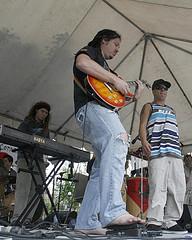Planner Meeting
Monday, February 24th, 2014In a large number of human activities it is necessary to work in team and organized by different meetings with the aim of reaching agreements, establish strategies, distribute the work and achieve goals, objectives or conflict resolution is common. The major drawback is that many of these meetings are not effective and repeatedly falls in a circle that leads without sense that does not lead to the expected results, in that sense should plan effective meetings following and respecting the following principles: v start on time: the issue of timeliness is essential to take domination and control of a situation and our life, when a meeting begins after the hour then sends a bad message of disorganization and lack of respect, is essential to highlight the policies of absolute punctuality, as us says Andrew Corentt in his book I am happy, I am rich which is indispensable respect his word, or be himself, if you do not control nor the smaller things then how he thinks controlling major projects, in this book you learn techniques to make their words taking power and the first strategy is to always fulfill the tasks that you are committed to make. (v) review the agenda and set priorities: one of the great disadvantages of many meetings is that a lot of topics that are of little importance touching and the result of this is that time runs out without that the most important issues are addressed, then you must deal with the most urgent and far-reaching subjects. v adhere to the agenda: it is common to lose the goal at a meeting and it is here where the moderator or leader should be attentive in order to ensure that the objectives are met fully. v properly assign tasks: This applies before, during and after, a good Planner always gives timely responses, it is necessary to avoid all improvisation.

 Some engineers at the Massachusetts Institute of technology (MIT) have successfully created a sophisticated and economical method to convert ordinary glass into a solar concentrator technology. The technology relies on glass Windows, applies to which a coating as a paint or varnish, that collects and directs the photons that would be lost if this surface is a conventional solar panel. In addition, could allow in the future that an office building obtain energy through its tinted Windows, in addition to using your roof. This technology can be very practical to reduce the cost of solar energy. Marc Baldo, Michael Currie, Jon Mapel, Timothy Heidel and Shalom Goffri covered glass panels with layers of two or more light sensors dyes. The dyes absorbed the incoming light and reemitieron energy inwards of the glass, which served to drive the light towards the solar cells along the edges of the panels. Dyes may vary from which appear in bright colours to chemical compounds that you are very transparent to visible light.
Some engineers at the Massachusetts Institute of technology (MIT) have successfully created a sophisticated and economical method to convert ordinary glass into a solar concentrator technology. The technology relies on glass Windows, applies to which a coating as a paint or varnish, that collects and directs the photons that would be lost if this surface is a conventional solar panel. In addition, could allow in the future that an office building obtain energy through its tinted Windows, in addition to using your roof. This technology can be very practical to reduce the cost of solar energy. Marc Baldo, Michael Currie, Jon Mapel, Timothy Heidel and Shalom Goffri covered glass panels with layers of two or more light sensors dyes. The dyes absorbed the incoming light and reemitieron energy inwards of the glass, which served to drive the light towards the solar cells along the edges of the panels. Dyes may vary from which appear in bright colours to chemical compounds that you are very transparent to visible light.